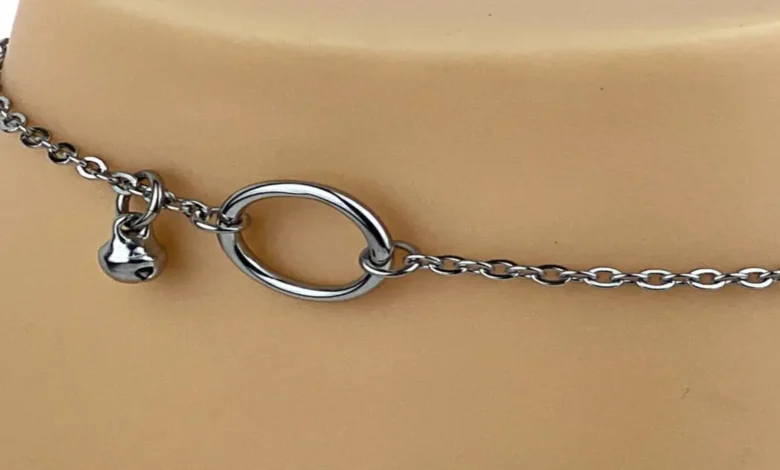Submissive Collars: A Deep Dive into Their Meaning, Types, and Significance

Understanding Submissive Collars
Submissive collars hold deep significance in the world of BDSM and power dynamics. These accessories are more than just aesthetic pieces; they represent commitment, trust, and ownership between partners. While the concept might be unfamiliar to some, those engaged in the lifestyle see them as symbols of dedication, much like wedding rings in traditional relationships.
Collars have been an integral part of BDSM culture for decades, evolving to suit different relationship dynamics and personal preferences. Some wear them 24/7, while others reserve them for scenes or special occasions. The meaning behind them varies, but at their core, submissive collars signify an agreement between a Dominant and a submissive, reinforcing the power exchange that defines their dynamic.
The Symbolism Behind Submissive Collars
Collars are not merely decorative pieces; they serve as a powerful representation of a submissive’s commitment to their Dominant. Wearing one often signifies trust, control, and obedience, with the submissive acknowledging their role within the relationship. The act of being collared can be deeply emotional, as it represents a level of surrender and devotion that goes beyond words.
For Dominants, placing a collar around their submissive’s neck is an act of claiming. It shows responsibility, protection, and the intention to nurture and guide the submissive. The collar symbolizes a contract, whether spoken or unspoken, that reinforces the boundaries, expectations, and responsibilities within the relationship.
Beyond personal relationships, submissive collars can also serve as a marker of community and belonging. Some wear them in public spaces to indicate their lifestyle, while others keep them private, using them only within the confines of their dynamic. Regardless of how they are worn, the emotional and psychological weight they carry is undeniable.
Different Types of Submissive Collars

Submissive collars come in many forms, each with its unique purpose and meaning. The type of collar chosen depends on the nature of the relationship, the level of commitment, and the preferences of those involved. Some collars are meant for daily wear, while others are used specifically for play sessions.
Day Collars
Day collars are designed for discreet wear, allowing submissives to keep their connection to their Dominant while maintaining a vanilla appearance. These collars often resemble simple necklaces or bracelets, making them ideal for those who wish to carry a symbol of their dynamic without drawing unwanted attention.
Many day collars incorporate subtle elements like lockable pendants, elegant metalwork, or leather straps that blend seamlessly into everyday fashion. Some submissives wear them to work, social events, or family gatherings, ensuring their dynamic remains private while still feeling the presence of their Dominant.
Play Collars
Play collars are primarily used during BDSM scenes and sessions. Unlike day collars, these are often more overtly designed for the lifestyle, featuring D-rings, buckles, or intricate leatherwork that allows for attachment to leashes, chains, or other restraints. They are practical, durable, and built for function, ensuring they can withstand intense scenes and physical play.
Play collars often come with additional features such as quick-release mechanisms, adjustable straps, and locking clasps. These elements enhance the experience by reinforcing submission and control, creating a stronger psychological connection between the Dominant and submissive.
Training Collars
Training collars are used in relationships where a submissive is still learning and developing within their dynamic. These collars symbolize the training process, signifying that the submissive is under the guidance of their Dominant. They may be temporary, lasting until the submissive progresses to a higher level of commitment.
Many training collars are simple in design, focusing on function rather than aesthetics. They serve as a constant reminder of discipline, expectations, and the submissive’s journey toward fully embracing their role. Some Dominants use them to reinforce rules and protocols, rewarding or removing them based on the submissive’s behavior.
Permanent Collars
Permanent collars are the ultimate symbol of commitment in a BDSM relationship. Much like a wedding ring, these collars signify a long-term or even lifelong dedication between a Dominant and submissive. They are often made of durable materials like stainless steel or high-quality leather, designed to withstand daily wear.
Receiving a permanent collar is a significant milestone, representing trust, loyalty, and an unbreakable bond. Some couples even hold collaring ceremonies, similar to weddings, to commemorate the occasion. The act of permanently collaring a submissive is deeply meaningful and should be approached with care, mutual consent, and understanding.
How to Choose the Right Submissive Collar
Choosing the right submissive collar involves considering comfort, functionality, symbolism, and personal preference. The process requires open communication between partners to ensure the collar aligns with their expectations and relationship dynamics.
Material plays a significant role in the selection process. Leather collars are classic and durable, offering a traditional BDSM aesthetic. Metal collars, on the other hand, provide a sleek and permanent feel, often used in long-term dynamics. Fabric and silicone options are also available for those who prefer a softer touch or hypoallergenic materials.
Fit and comfort are crucial, especially for those wearing their collars daily. A collar that is too tight can cause discomfort, while one that is too loose may not feel secure. Adjustable options are ideal for those who want flexibility, ensuring a perfect fit that accommodates different needs.
The Emotional and Psychological Impact of Submissive Collars
Beyond the physical aspect, submissive collars carry deep emotional and psychological significance. For many, wearing a collar instills a sense of belonging, security, and purpose. It reinforces the power exchange within the relationship, allowing submissives to embrace their role fully.
The act of being collared can bring immense comfort, creating a feeling of being cherished and protected. It serves as a reminder of the Dominant’s guidance and the trust shared between both partners. The psychological weight of a collar can enhance the submissive’s experience, deepening their connection to their Dominant.
Conversely, for Dominants, the collar represents responsibility and care. Owning a submissive means ensuring their well-being, both emotionally and physically. The collar serves as a tangible representation of this duty, reminding them of their role in the relationship.
Final Thoughts on Submissive Collars
Submissive collars are more than just accessories; they are powerful symbols of devotion, trust, and control. Whether worn for play, training, or lifelong commitment, these collars serve as a tangible representation of the dynamic between Dominant and submissive.
Understanding their significance, choosing the right type, and respecting their meaning can enhance a BDSM relationship, strengthening the connection between partners. As with all aspects of power exchange, consent, communication, and mutual respect are key to ensuring that the collar serves its intended purpose.
For those considering incorporating submissive collars into their dynamic, exploring different styles and meanings can lead to a more fulfilling and enriched experience. The journey of submission and ownership is deeply personal, and the collar remains a lasting symbol of that bond.





